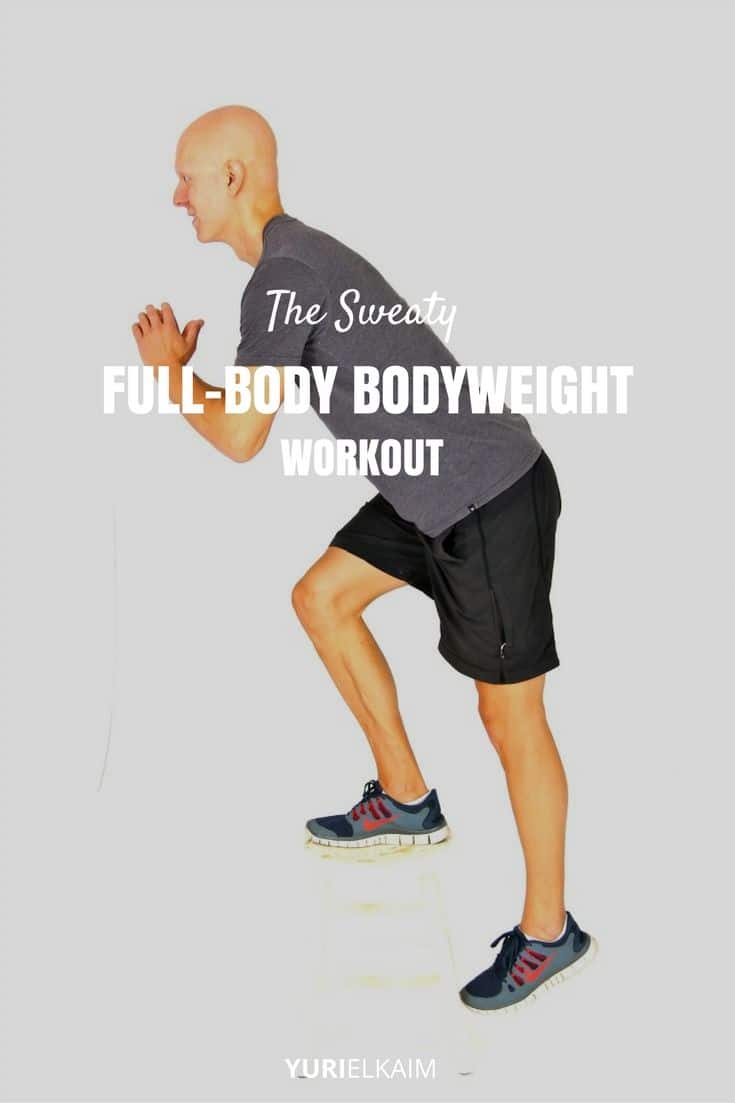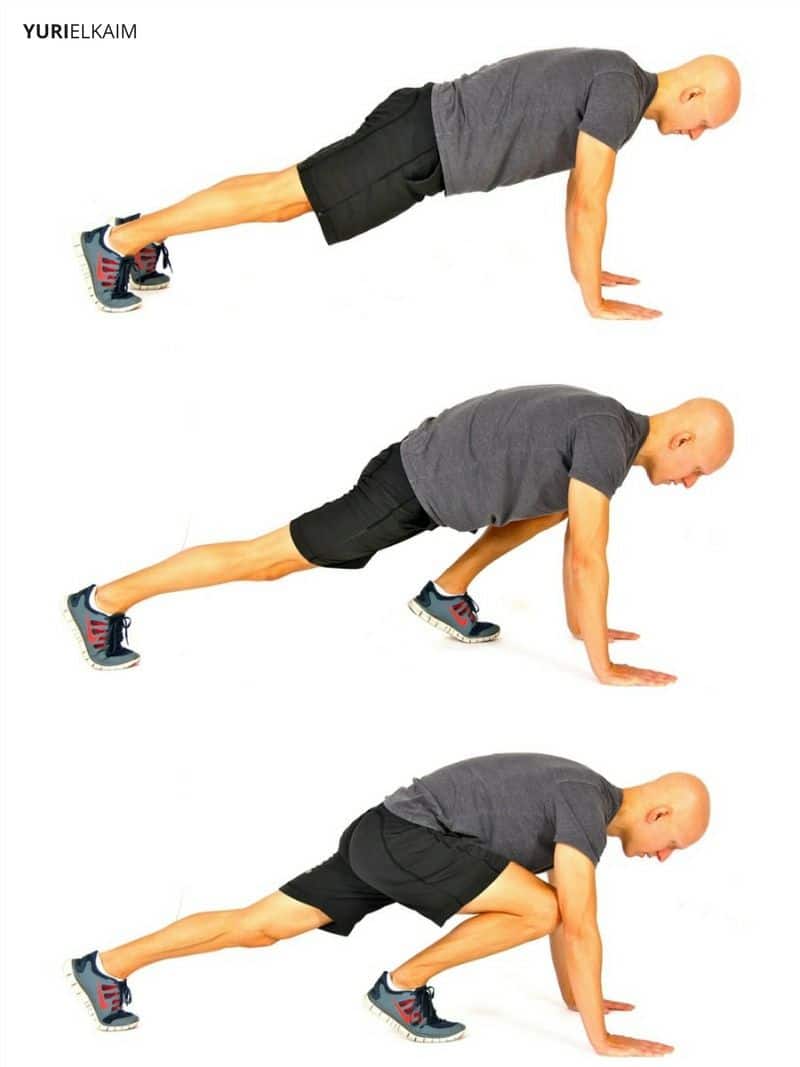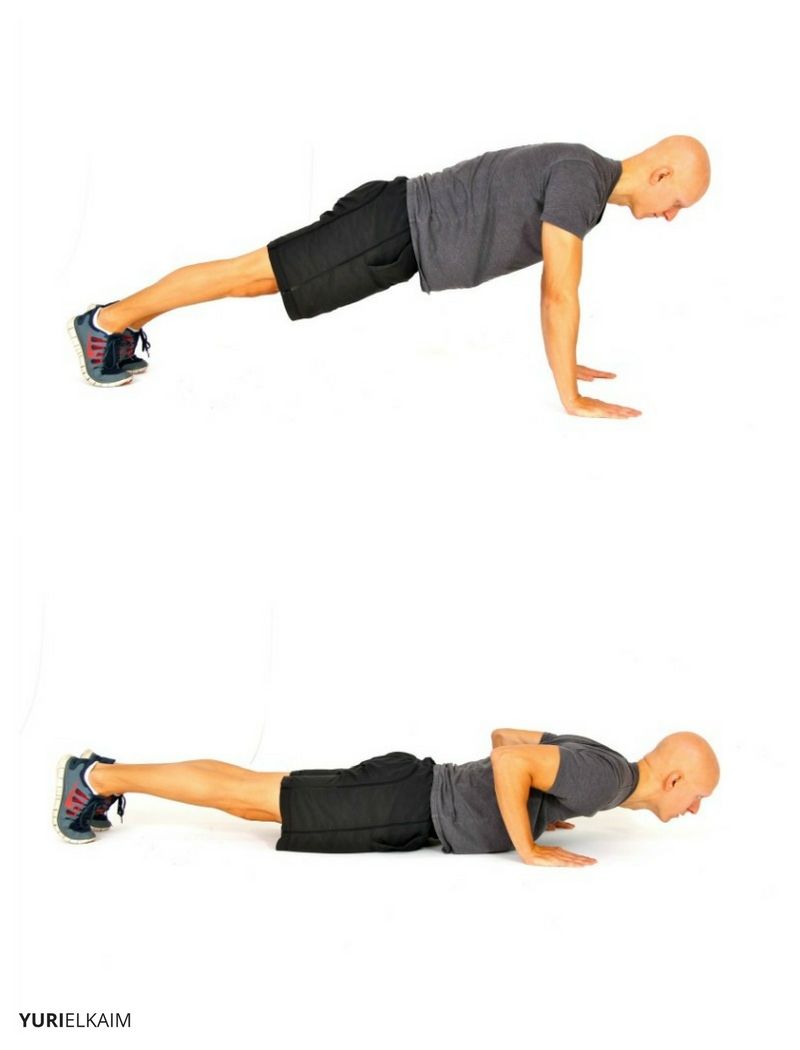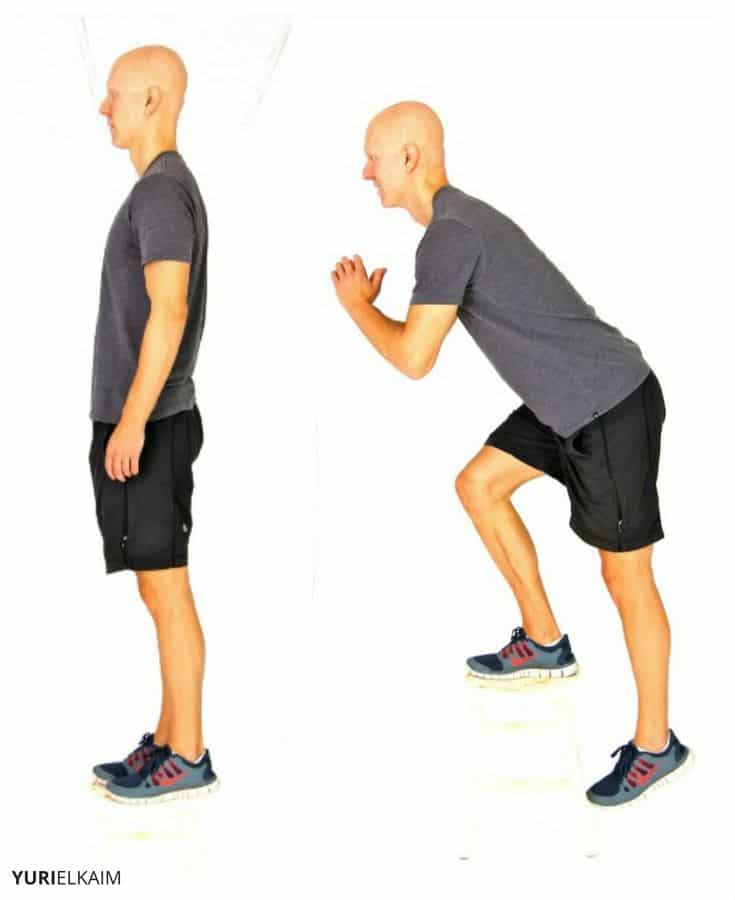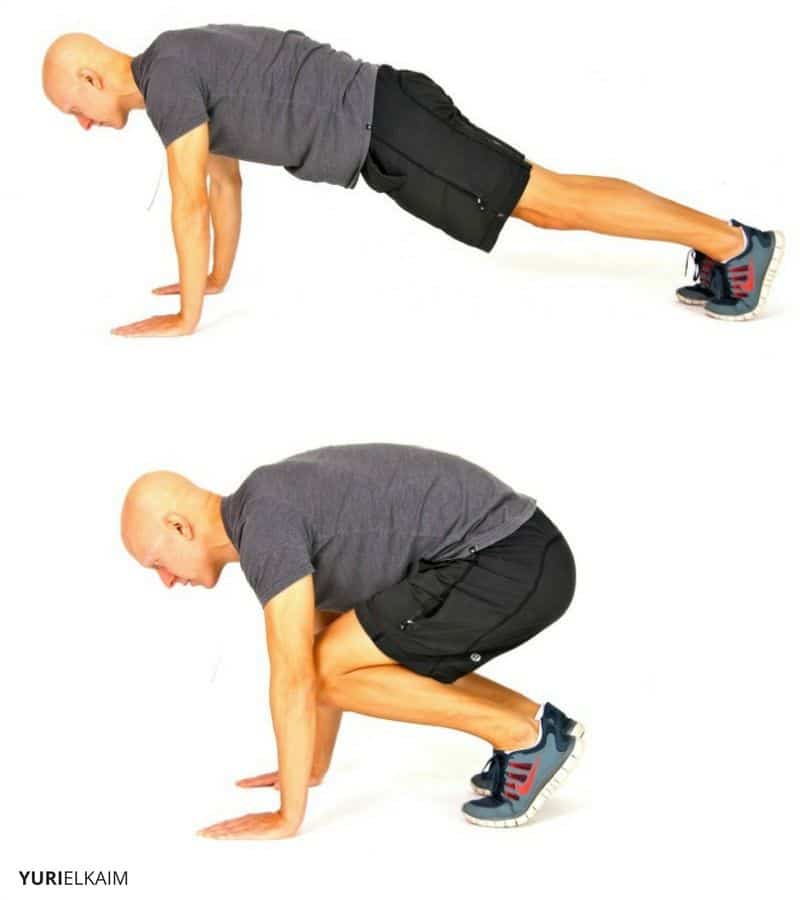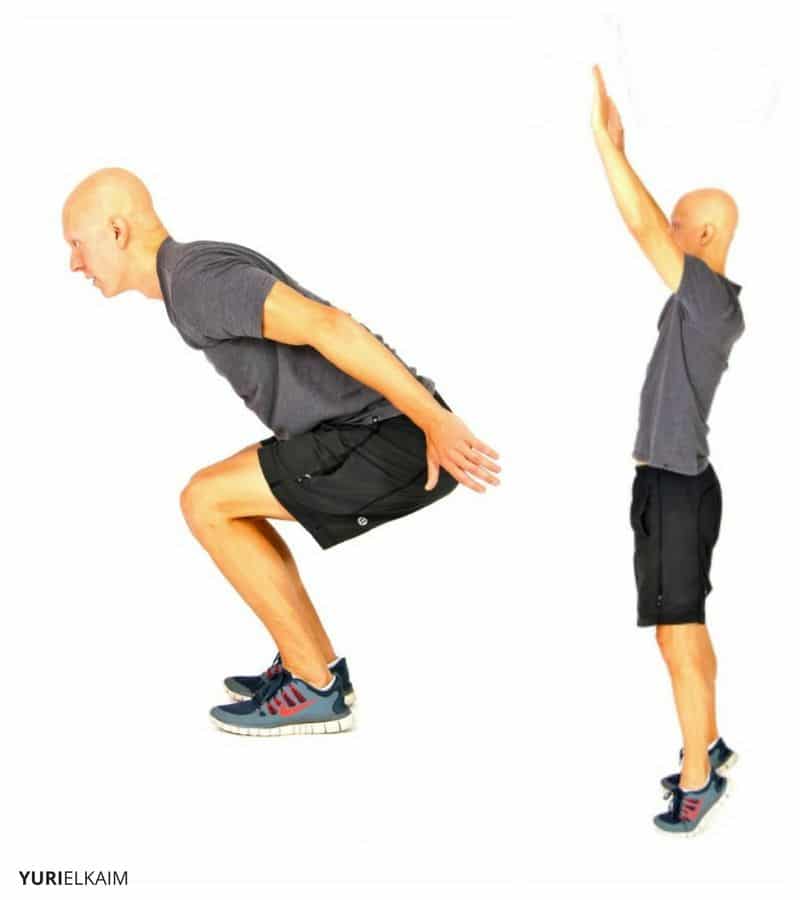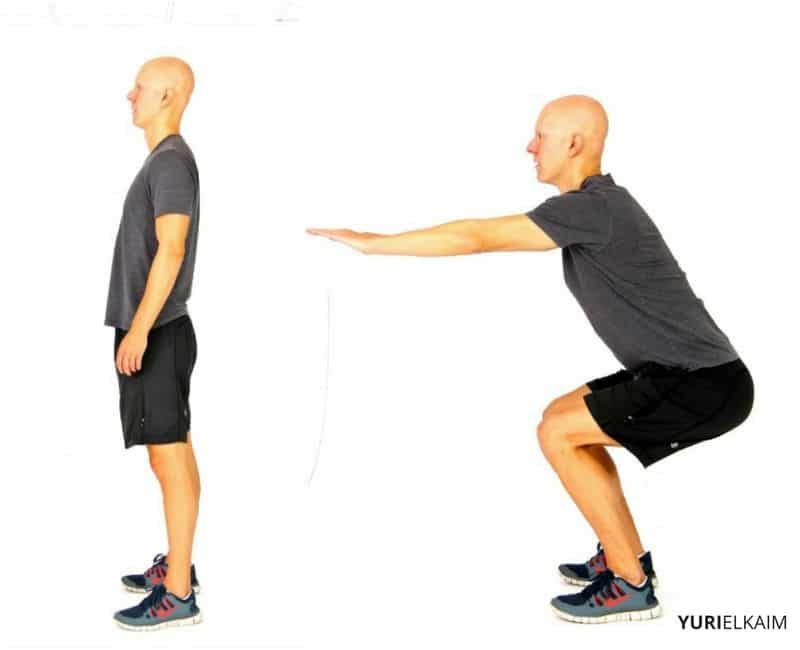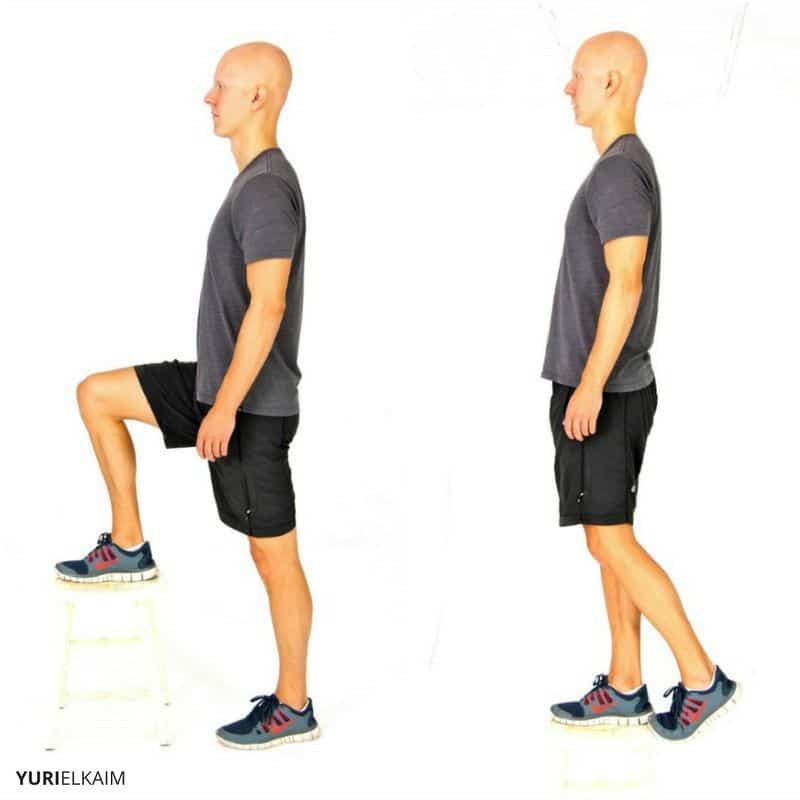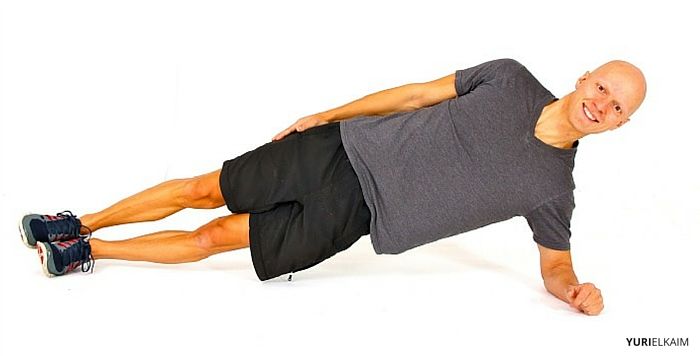In this article
Is it possible to get toned and fit without stepping foot inside a gym?
Not only is it possible, some might even discover avoiding the gym (and the endless machines that go with it) actually leads to superior results.
Now, this isn’t to say that certain forms equipment, such as weights, don’t have their place.
However, many people underestimate the amazing results you can achieve using just your own bodyweight during a workout.
Read on to discover why these workouts are so effective (especially for burning fat) and try out a full bodyweight workout you can do anywhere, at any time.
How to Create a Great Total-Body Workout
Effective bodyweight workouts are anything but easy.
But before you let this scare you, remember that intensity is the one factor that determines how many calories we burn and the depth of our results.
In fact, studies have shown that high-intensity training using intervals is superior to nearly all other forms of training when it comes to fat loss (1).
However, this style of training also has multiple side effects besides fat loss, namely: lowered insulin resistance, improved glucose tolerance, and improved VO2 max.
In short, exercising at these levels of intensity improves all-around fitness, and shows promising benefits for people with type 2 diabetes (2).
What a 25-Minute Fat-Burning Workout Looks Like
The key to achieving this type of intensity with a bodyweight workout lies in using this format:
1. Circuits
Circuits provide structure to your bodyweight routine, and work by placing one exercise after another, with minimal rest in between.
They can then be repeated any number of times, but average two to three for a full 20-minute workout.
This type of workout allows you to move from one exercise to the next, alleviating boredom and also keeping your heart rate up.
2. Minimal Rest
The idea of minimal rest between each exercise in your circuit ensures the level of intensity we need to torch fat.
This type of training can also be referred to as interval training, and has been proven to be superior to longer, lower-intensity cardio workouts for fat loss.
For instance, a study comparing steady-state aerobic exercise to high-intensity interval training (HIIT) found that the HIIT group lost substantially more subcutaneous body fat than the steady aerobics group (2).
Other studies have found that interval training produces amazing results when it comes to belly fat, with one study finding that just eight weeks of HIIT led to a 44 percent decrease in abdominal fat.
One of the theories behind why minimal rest combined with high-intensity intervals is so effective is that by keeping the intensity high, you’re sucking in more oxygen.
Consequently, the more oxygen you consume, the greater your calorie burn (approximately five calories of energy per one liter of oxygen).
This also results in more calories burned while you’re not even working out, which I’ll delve into below.
3. Compound Movements
This workout also uses compound movements, which are some of the best for building muscle while simultaneously burning fat.
This is due to these exercises utilizing multiple major muscle groups at one, which effectively burns more calories.
These movements also increase something called excessive post-oxygen consumption, or EPOC. EPOC refers to the number of calories burned following a workout as your body replenishes its oxygen levels and removes lactic acid from your muscles.
Accordingly, researchers have discovered EPOC to be higher following high-intensity interval workouts (3).
Compound exercises combined with intensity also have a marked influence on certain hormones required for muscle growth, such a growth hormone, testosterone, and catecholamines norepinephrine and adrenaline (2).
The Full Bodyweight Workout Routine
Now, without further ado, lets jump into our bodyweight routine.
These bodyweight exercises will be performed in a circuit format, with variations listed for beginners and advanced levels.
Beginner’s Circuit
Perform each of the exercises for 30 seconds, followed by one minute of rest.
Move on to the next exercise until all eight are complete, rest for two minutes, then repeat the entire circuit a second time.
Decrease the amount of rest between exercises as you adapt.
Intermediate to Advanced Circuit
Perform each exercise for 45 seconds to one minute, followed by 30 seconds of rest. Once all eight exercises are complete, rest for one minute, then repeat the circuit a second time through.
Advanced folks can also try adding free weights to make the exercises more challenging. Most of these exercises can be performed with dumbbells or weighted plates.
1. Mountain Climbers
Begin in a plank position with your hands beneath your shoulders and your body in a straight line from head to toe. Engaging your core, draw in your right knee toward your chest, then extend it back to the starting position. Do the same with your left knee, and continue alternating knees.
Beginners: You can modify this exercise by placing your hands on an elevated surface, such as a chair, and draw in your knees up to your chest.
2. Bulgarian Lunges
Begin by placing one foot on an elevated surface (such as a bench or box) behind you.
Be sure your lunging knee stays behind your toes as you lower toward the ground. Push back to standing and repeat for roughly 8-10 reps, then switch sides.
Beginners: You can choose to either do standard alternate lunges or reverse lunges.
3. Pushups
Begin in a plank position, hands under your shoulders with your body in a straight line from head to toe.
Lower your chest to the ground, being careful to keep your elbows in and to not drop your hips. Push back up to a plank, then repeat.
Beginners: You can do wall, chair, or countertop pushups. Simply extend the feet behind you as you would a regular pushup, lowering your chest toward the surface you’re elevated on.
4. Single-Leg Drop Squat
Begin standing on top of a low bench or box.
Raise your left leg so that it hovers off the edge of your bench, then lower into a squat on your right leg. Push through your heel and glutes to return to standing. Repeat for 8-10 reps on one side, then switch legs.
Beginners: You can perform standard alternating lunges.
5. Burpees
Begin standing tall, then squat down to the floor, hopping your legs back into a plank position.
Hop your legs back beneath you, then spring up, clapping your arms above your head as your feet leave the floor. Repeat.
Beginners: You can perform “walking burpees” by first stepping back one leg, then another, into a plank position. Return to standing by stepping both feet back beneath you, then repeat.
6. Squats
Begin with your feet slightly wider than hip-width apart, toes at a 45-degree angle. Push your buttocks back (like you’re about to sit in a chair) as you lower.
Keep your knees behind your toes and your chest open. Once you’ve reached parallel with the ground, push through your heels to return to standing. Repeat.
7. Step-Ups
Begin standing in front of a box or bench. Place one foot on top of the bench and push up to stand on top of it.
Alternate legs and repeat.
8. Side Planks
Begin on your right side, legs straight and right arm directly beneath your shoulders.
Lift your hips and engage your core muscles. Hold for 15-30 seconds (depending on if you’re a beginner or advanced) then switch sides.
Beginners: You can perform standard planks or side planks on a wall or countertop.
No Gym, Plenty of Sweat
This full bodyweight workout will have you working up a sweat, burning fat, and building muscle without setting foot in a gym.
Change up the exercises as you become fitter, and know that you can add in weights or a stability ball to make the moves more challenging.
Want More Bodyweight Fun?
Check out my 6-exercise bodyweight circuit workout, which will help you burn fat and get stronger.
This bodyweight circuit includes an instructional video, workout tracker, and follow-along audio. A $29 value – its yours FREE!
Download the Bodyweight Workout right now by clicking the banner below!

